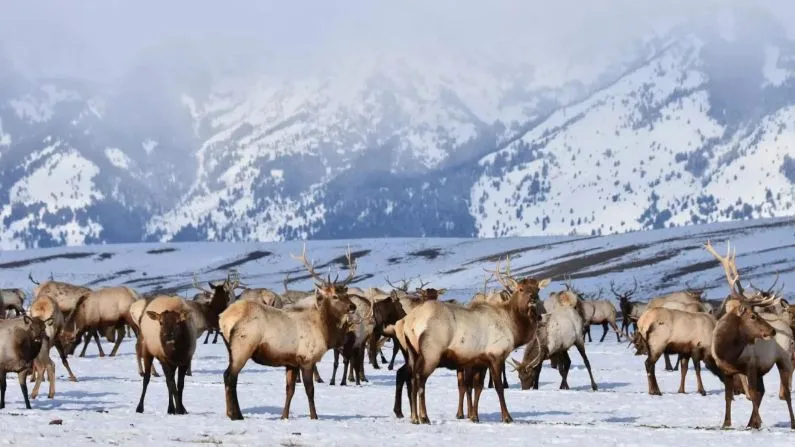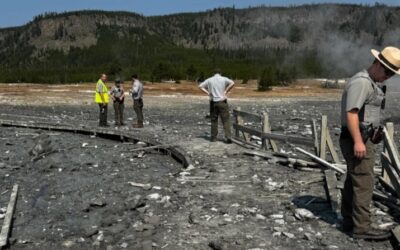This story comes through a content-sharing partnership with Wyoming Public Media.
A milder start to winter means fewer elk on the National Elk Refuge in Jackson, which isn’t necessarily a bad thing.
So far, this winter has the lowest snowpack at the National Elk Refuge since they started taking measurements back in 2007, according to first reporting from Buckrail. Because of the lack of snow, the elk can still spread out and graze.
“The longer that elk can sustain themselves on natural forage, the better it is for the elk,” said Frank Durbian who’s the refuge manager.
Durbian said there are about 3,400 elk on the refuge this year compared to the 5,900 counted around this time last year. This is good news for the limit of disease spread like Chronic Wasting Disease (CWD) and Brucellosis.
“Anytime you have elk more spread out, you have less chance of diseases being transmitted,” Durbian said. “So that’s a positive.”
Those two diseases, especially CWD, are a growing concern amongst Wyoming’s elk herds. So much so that the Wyoming Game and Fish Department is re-evaluating how it’ll manage its 22 state run feedgrounds in the future, partly to try to limit the spread of disease. This could involve reducing feeding, but only if elk population objectives are still met and disease transmission to cattle is avoided. This particular plan will be further discussed at the Game and Fish Commision meeting in March.
As for the National Elk Refuge, which is federally managed, Durbian said they haven’t started throwing hay yet for supplemental winter feed.
“We typically have a trigger point of 300 pounds per acre of standing available forage and that’s what the trigger point is for feeding on the refuge and we’re nowhere near close to that at this point in time,” Durbian said.
For context, about one inch of pasture equals about 300 pounds of forage per acre.
If a mild winter continues it’s possible they won’t feed at all this season, but Durbian said it’s hard to say right now.
“If I could predict the weather, I could predict some other things but I can’t predict the weather. So I’ll hold off on that one,” he chucked.
Durbian said the last time they didn’t feed for an entire season was 2018.
Notably, winter tours of the refuge are still happening, albeit by wagon – not sleigh.





